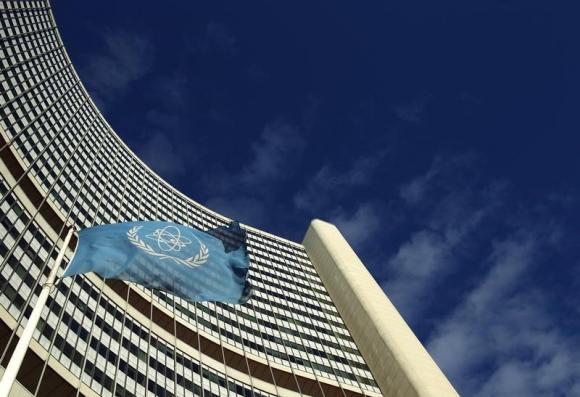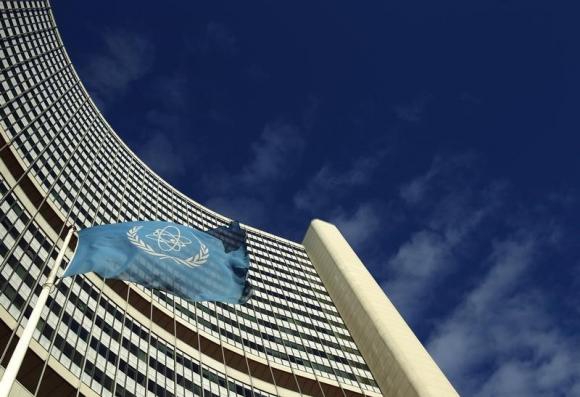 The flag of the International Atomic Energy Agency (IAEA) flies in front of its headquarters during a board of governors meeting in Vienna November 28, 2013.[/caption]
The flag of the International Atomic Energy Agency (IAEA) flies in front of its headquarters during a board of governors meeting in Vienna November 28, 2013.[/caption](Reuters) - Iran has taken preparatory action to start a delayed uranium conversion plant it needs to fulfill an interim nuclear agreement reached with six world powers last year before the accord expires this month, diplomatic sources said.
The start-up of the facility would show Iran's commitment to the landmark Nov. 24 deal as it holds talks with the United States, Russia, France, Germany, Britain and China on a long-term settlement of the dispute over its atomic aims.
But in view of still wide gaps in negotiating positions, some diplomats and experts believe the negotiations - and the preliminary agreement - may need to be extended.
Under the accord that runs for six months until July 20, Iran is supposed to convert a large amount of low-enriched uranium gas into an oxide form that would be less suitable for processing into nuclear bomb material. It was one of the terms of the deal that won Tehran some easing of sanctions.
To be able to do that, it has been building a facility near the central city of Isfahan for turning the gas into powder.
After months of delays, the U.N. International Atomic Energy Agency (IAEA) in May said the plant's commissioning had begun, but it was still not operating.
Since then, however, the sources said practical steps had been taken indicating the work could start soon, if it had not already. They include removal of IAEA seals on a uranium gas cylinder, necessary before connecting it to the conversion line.
With time running short, the issue is closely watched by diplomats monitoring Iran's compliance with the November accord.
It was negotiated to buy time for talks on a permanent agreement intended to remove the risk of a new Middle East war over Iran's nuclear aspirations, which it says are peaceful but the West fears aim to develop a nuclear weapons capability.
Those negotiations began in February and resumed last week in Vienna with the aim of hammering out an accord by a self-imposed July 20 deadline, replacing the interim deal.
BIGGER URANIUM STOCKPILE
While Iran under last year's agreement halted its most proliferation-sensitive work, enrichment to a fissile concentration of 20 percent, it is allowed under the pact to continue producing uranium gas refined to up to 5 percent.
However, reflecting Western concern also about this reserve, Iran undertook not to increase it so that it is not larger by the end of the half-year accord than what it was when it took effect on Jan. 20, Western diplomats have said.
IAEA reports have shown that Iran is meeting all the other requirements under the interim agreement.
Iran says it is producing low-enriched uranium to fuel a planned network of nuclear power plants, not to develop bombs. Uranium must be enriched to a high degree - about 90 percent fissile purity - for a nuclear weapon.
Experts say Iran potentially has enough of this kind of uranium gas for a few nuclear weapons if enriched much further. Limiting its overall enrichment capacity is one of the thorniest issues in the negotiations on a final deal.
Because of the conversion facility's delay, the low-grade uranium stockpile has grown to nearly 8.5 tonnes in May from 7.6 tonnes in February, according to IAEA reports. Experts say Iran will be able to convert a large amount in a relatively short time once the facility required for this is up and running.
By Reuters
The Iran Project is not responsible for the content of quoted articles.











